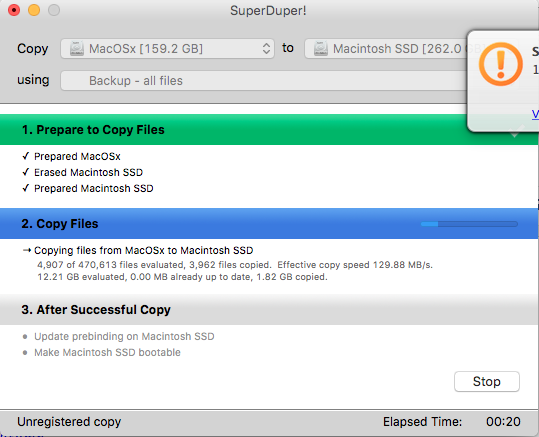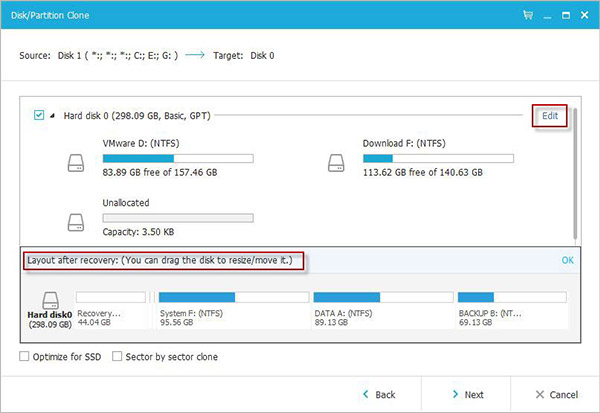
- #Superduper clone recovery partition password
- #Superduper clone recovery partition plus
- #Superduper clone recovery partition mac
#Superduper clone recovery partition plus
Use the pie chart, plus sign icon, and other controls to create the two partitions ( Clone and Time Machine), ensuring the capacities are calculated as noted above. If the button is grayed out, make sure you have selected the drive and not the indented volume shown beneath the drive in the list. Select your external drive from the list at left and then tap the Partition button in the top-hand toolbar.
#Superduper clone recovery partition mac
With your external drive connected to your Mac and powered on, use the Finder to launch Disk Utility, which is in Applications > Utilities. If you have a 500 GB internal drive, the above formula yields the following minimum partition size allocations:

MacOS performs best when you leave at least ~20% of your internal drive free, as it is often used for virtual memory and other OS-level functions. In either case, this tutorial assumes all these drives do not have any valuable data on them, as they will be fully erased in order to store the backups. Otherwise, you will need to partition a single external drive that is at least twice as large as your internal drive. If you have one external drive at least as large as your internal drive, and you have another, second external drive that’s at least 1.5 times as large as your internal drive, then you can skip this section. external drive at least as twice large as internal drive (this external drive will be completely erased).
#Superduper clone recovery partition password

The purpose of the off-site backup is geographical redundancy. With Time Machine, however, you can go back in time and restore that deleted file. If you delete an important file by accident and don’t immediately realize it, and your drive is replicated to your clone, then that important file will also be deleted from your clone.

Time Machine backups are not bootable, but they have something that the clone does not: versioning. Having a bootable clone means that if your primary drive fails or gets corrupted, you can boot into your clone and be back up and running immediately, without any down-time. The first step is to come up with a backup strategy. That doesn’t scale very well, so I have written this guide so folks can set it up on their own. This conversation is usually followed by me setting up an automated backup system for them. I tell them not to feel bad the only reason I ask is because I don’t want them to make the same mistakes that I’ve made in the past. I sometimes ask friends and family members about their backup strategies, a question usually met by sheepish looks and mumbled confessions of neglect.


 0 kommentar(er)
0 kommentar(er)
